Queer Representation in Books: Give Me All of It, Every Kind
I’ve been thinking a lot lately about queer representation in books. For reasons both deliberate and coincidental, my reading so far in 2020 has been very queer. I’m always on the hunt for queer stories, so this isn’t especially surprising, but what strikes me, as I look back over the past two months of reading, is the sheer range of queer books that I’ve read. Without trying, I started the year with a selection of books that have the kind of queer representation I crave: all of it.
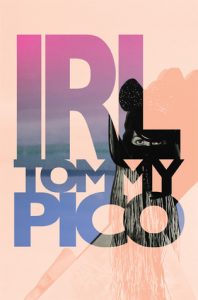 I started out the year with two incredible queer audiobooks: Here For It by R. Eric Thomas and IRL by Tommy Pico. Here For It is a collection of essays about Thomas’s experiences as a gay black man, his relationship with Christianity, and his identity as a writer. IRL is a meandering poem about living as a queer indigenous person in the city. These two books have little in common; they are simply two beautiful examples of queer men telling their own stories.
I started out the year with two incredible queer audiobooks: Here For It by R. Eric Thomas and IRL by Tommy Pico. Here For It is a collection of essays about Thomas’s experiences as a gay black man, his relationship with Christianity, and his identity as a writer. IRL is a meandering poem about living as a queer indigenous person in the city. These two books have little in common; they are simply two beautiful examples of queer men telling their own stories.
I devoured Laura Dean Keeps Breaking Up With Me by Mariko Tamaki and Rosemary Valero-O’Connell in one afternoon. It’s a graphic novel about a teenage girl stuck in a bad relationship. I followed that with A Beautiful Crime by Christoper Bollen, a literary thriller set in Venice, which follows a gay couple in their 20s who are attempting to scam their way into a large chunk of cash.
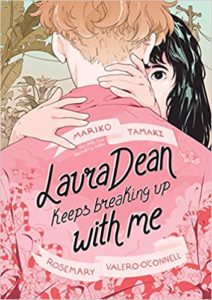 These two books could not be more different in terms of style, genre, and subject matter. What they do share is imperfect queer characters. Freddy Riley, the protagonist of Laura Dean Keeps Breaking Up With Me, is continually making bad decisions that hurt her friends and keep her trapped in an unhealthy relationship. The two men at the center of A Beautiful Crime are self-absorbed and myopic, often unable to see beyond their own desires. But none of these characters are unsympathetic. They have complicated histories and specific fears and dreams. They are deeply relatable.
These two books could not be more different in terms of style, genre, and subject matter. What they do share is imperfect queer characters. Freddy Riley, the protagonist of Laura Dean Keeps Breaking Up With Me, is continually making bad decisions that hurt her friends and keep her trapped in an unhealthy relationship. The two men at the center of A Beautiful Crime are self-absorbed and myopic, often unable to see beyond their own desires. But none of these characters are unsympathetic. They have complicated histories and specific fears and dreams. They are deeply relatable.
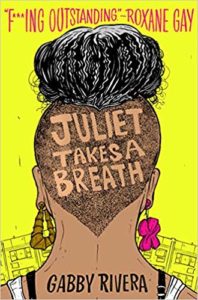 In one weekend, I read Full Disclosure by Camryn Garrett and Juliet Takes A Breath by Gabby Rivera, two wildly different but equally wonderful YA novels starring queer girls. Together, these two books explore so many facets of queer identity and sexuality. Characters in these two novels include: a black bisexual teenager, a Puerto Rican lesbian from the Bronx, an asexual lesbian, an interracial gay couple raising a teenager, and a white lesbian feminist with a lot of racist opinions—to name a few. There is nothing easy or simple or perfect about any of these characters. They are queer humans figuring out how to exist in the world. It is not a neat process.
In one weekend, I read Full Disclosure by Camryn Garrett and Juliet Takes A Breath by Gabby Rivera, two wildly different but equally wonderful YA novels starring queer girls. Together, these two books explore so many facets of queer identity and sexuality. Characters in these two novels include: a black bisexual teenager, a Puerto Rican lesbian from the Bronx, an asexual lesbian, an interracial gay couple raising a teenager, and a white lesbian feminist with a lot of racist opinions—to name a few. There is nothing easy or simple or perfect about any of these characters. They are queer humans figuring out how to exist in the world. It is not a neat process.
In the space of two weeks, I read two nonfiction books by trans authors who both write beautifully about queer rural life. Ivan E. Coyote is a trans writer and performer from the Yukon. In Tomboy Survival Guide, they write about everything from their big extended family to their queer coming of age in Vancouver.
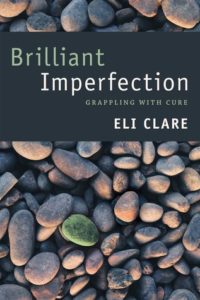 Eli Clare is a disabled, genderqueer writer who lives in Vermont. His book Brilliant Imperfection is probably my favorite book of the year so far; he dives deep into the intersections of disability, queerness, race, class and trans identity. These books are nothing like each other, and I only mention them side by side to illustrate how badly we need every queer book we can get. There is no one trans experience. There is no one rural queer experience. There are just the experiences of thousands of queer and trans people, living their particular lives, telling their specific stories.
Eli Clare is a disabled, genderqueer writer who lives in Vermont. His book Brilliant Imperfection is probably my favorite book of the year so far; he dives deep into the intersections of disability, queerness, race, class and trans identity. These books are nothing like each other, and I only mention them side by side to illustrate how badly we need every queer book we can get. There is no one trans experience. There is no one rural queer experience. There are just the experiences of thousands of queer and trans people, living their particular lives, telling their specific stories.
Among and between all these novels and memoirs, I was reading queer poetry. I read The Tradition by Jericho Brown, Tonguebreaker by Leah Lakshmi Piepzna-Samarasinha, Soft Science by Franny Choi and Homie by Danez Smith. These books are about as similar as milk and oil: they share an essential form, poetry, but that’s about it.
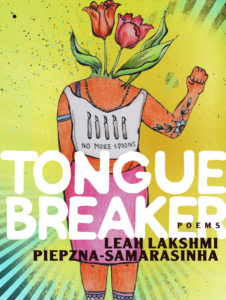 My heart was blown open reading about the pain and strength of queer disabled femme community in Tonguebreaker. I am still thinking about Franny Choi’s inventive use of punctuation and exploration of cyborg identity. In Homie, Smith opened a window into a world that is not mine, and so I read their poems reverently, holding my breath. I could read each of these books a hundred times and still not get to the bottom of all the ways these poets interrogate, imagine, and invent their experiences of queerness on the page.
My heart was blown open reading about the pain and strength of queer disabled femme community in Tonguebreaker. I am still thinking about Franny Choi’s inventive use of punctuation and exploration of cyborg identity. In Homie, Smith opened a window into a world that is not mine, and so I read their poems reverently, holding my breath. I could read each of these books a hundred times and still not get to the bottom of all the ways these poets interrogate, imagine, and invent their experiences of queerness on the page.
I read my favorite two novels of the year so far back to back. First I devoured Patsy by Nicole Dennis-Benn, which is one of the richest and most complex characterizations of queer women I’ve ever read. Then I listened to Real Life by Brandon Taylor, which took my breath away, both for its emotional intensity and the beauty of the writing. I was struck by the fact that both of these exceptional novels are about queer experiences that are rarely seen in literature.
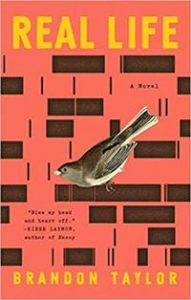 Patsy is about a Jamaican woman who immigrates to the U.S. hoping to reconnect with her best friend and first love. Real Life is about a gay Black man in graduate school in the Midwest, working in a lab on his PhD research and dealing with his group of mostly white friends. The thing is, neither of these are especially unusual experiences. The U.S. is full of immigrants and grad students. Of course some of them are queer. But in a world where queer representation in books is supposed to be a certain way, these are the kinds of ordinary experiences we rarely get to see. Reading these two novels was like taking a deep breath: yes, queer people are everywhere. Yes, we are PhD students and undocumented immigrants and yes, we come from every ethnic and class background, and no, we are not perfect, we are just humans.
Patsy is about a Jamaican woman who immigrates to the U.S. hoping to reconnect with her best friend and first love. Real Life is about a gay Black man in graduate school in the Midwest, working in a lab on his PhD research and dealing with his group of mostly white friends. The thing is, neither of these are especially unusual experiences. The U.S. is full of immigrants and grad students. Of course some of them are queer. But in a world where queer representation in books is supposed to be a certain way, these are the kinds of ordinary experiences we rarely get to see. Reading these two novels was like taking a deep breath: yes, queer people are everywhere. Yes, we are PhD students and undocumented immigrants and yes, we come from every ethnic and class background, and no, we are not perfect, we are just humans.
A few hours after I finished reading Real Life, I started listening to Real Queer America by Samantha Allen. In this book—part memoir, part collection of interviews—trans reporter Samantha Allen takes a road trip though conservative states to visit the queer and trans people living there.
I was driving down a dirt road on the tiny island where I live while I listened to the introduction to this book. In it, Allen talks about how queer people live and thrive and fight and have families in every corner of this country, from the biggest cities to the tiniest rural towns. I burst into tears.
I don’t think it was because of the introduction that I started sobbing. It was the cumulative effect of all those queer books I’d just read sinking into my heart and reminding me of the bone-deep truth of Allen’s assertion. In the book, Allen interviews a trans Mormon man living in Salt Lake City, a queer Latinx couple from the Rio Grande Valley, and the owner of a queer bar in Indiana, among many others. It reflects, in real life, all the messy queer representation I’d been reading about in fiction for the past few months. I suddenly felt overwhelmed by the infiniteness of queer experience. I had to pull over and cry for a while before I could keep listening.
As a queer reader, it can be hard to find books that resonate. Rioters have written before about how exhausting it can be to read books about queer suffering. I even made a list of queer novels without any. But should queer writers just stop writing about queer suffering? Of course not. How, then, do we navigate the desire to read books that truly reflect our varied queer lives in a literary world that so often feels like it only has one queer story to tell, over and over again?
The answer that made me burst into tears on that dirt road is a simple one: give me all the queer representation, every kind. I want lesbian aunties and gay dads and pansexual besties that aren’t just there for cheap laughs. I want the siblings and niblings of main characters to be trans women and nonbinary folks and asexual teenagers who know what they want. I want queer villains and queer heroes and every queer version of the murky in-between. I want queer characters who make bad choices, who are not good people, who are sloppy and vindictive, who are loud, sick, selfish, selfless, infuriating, endearing.
I want queer folks dying all over literature, and not just from homophobic violence but from pancreatic cancer and old age and in mountain climbing accidents. I want queer characters living happily ever after. I want queer families in a thousand different configurations. I want to sob over queer books so painful they shake in my hands. I want page after page of queer joy. Give me queer suffering and give me queer celebration. Everything that happens to humans—and aliens, too, for that matter—give to me, and make it queer. I want it all.
Queer representation in books, though steadily becoming more reflective of the real world, is still far too narrow. But a vast array of books that speak to the multiplicity of queer experience does exist. I just read 15 of them, and I didn’t even mention every queer book I’ve read this year. The books are out there. Let’s celebrate them.
Not sure where to start to find messy, beautiful, complicated queer representation in books? I made a list of 40 of my favorite queer books, ever. You can also check out our LBGTQ archives for recommendations galore.
Thanks for reading.
Please Share, Comment, Like the post And Follow, Subscribe CTS Store.
from Source

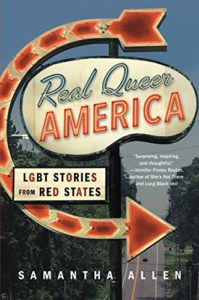



Post a Comment